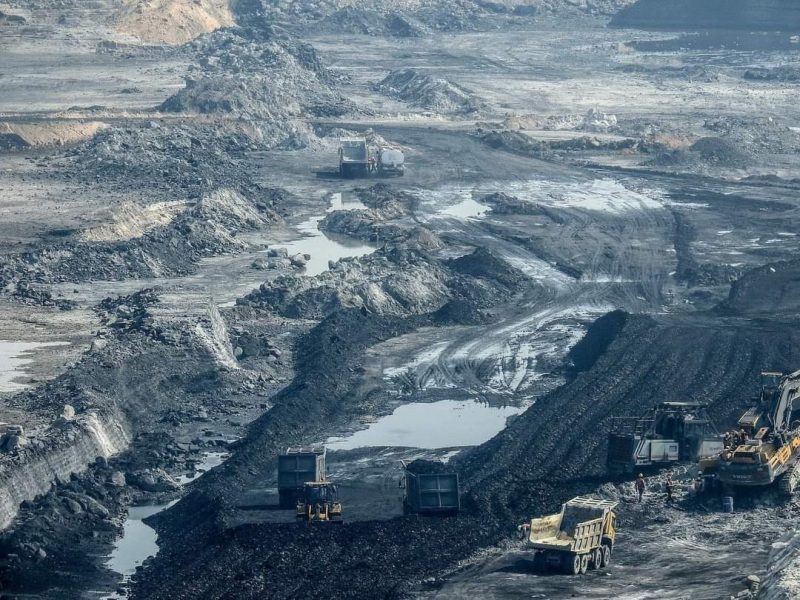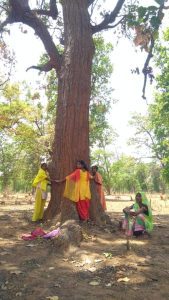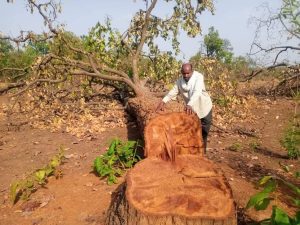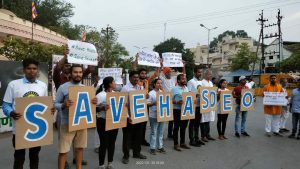
Chhattisgarh tribals up in arms as Surguja coal project enters new phase
State government says coal mining is essential to meet power demand; activists say it destroys biodiversity and evicts tribals from their jal-jungle-jameen

With decks cleared for coal mining in Hasdeo forest in Chhattisgarh’s Surguja district, things have to come to a head between the authorities and the groups protesting for over a decade against mining in the region.
The government says it is allowing coal mining in the region to meet the demand from power generation firms, in view of the looming power crisis in the country. However, many environmentalists and green groups say that apart from destroying the biodiversity of the region — which will have long-term adverse effects — the decision comes at the cost of evicting tribals from their jal-jungle-jameen.
Environmentalists and tribal groups under the banner of Chattisgargh Bachao Andolan allege that Forest Clearance (FC) and Environment Clearance (EC) for the Parsa coal block have been taken with forged documents and that gram sabhas were pressurised to sign the concerned documents.
Coal blocks of Parsa East and Keat Basin (PEKB) and Parsa have been allotted to Rajasthan Rajya Vidyut Utpadan Nigam Ltd, whose Mining Developer and Operator, the Adani Group, is all set to cut thousands of trees in the region to start mining.

However, tribals in the region are unwilling to leave the forest which has many devgudis — places where they worship trees as dieties.
Change in stance
Chhattisgarh Chief Minister Bhupesh Bhagel, who was earlier reluctant to give clearance, has surprisingly changed his stance and is now advocating the mining work, citing the power demand.
The state government had, in March, given the go-ahead for coal mining in an area of 1,138 hectares under the second phase of the Parsa East-Kete Basan (PEKB) coal block and for 1,252 hectares in the Parsa block.
“Though mines are allotted by the Union government, Chief Minister Baghel could have opposed saving the forest in the region by denying environment clearance,” said environmentalist Amok Shukla.
Hasdeo Aranya: An introduction
The Hasdeo Aranya is a forest region spread over Surguja and Korba districts of northern Chhattisgarh and is one of the largest intact dense forests in Central India sprawling over 170,000 hectares. It is rich in biodiversity, with 450 species of flora and fauna, including many critically endangered species. There is a significant elephant presence in the area throughout the year as it is a part of the pachyderm’s migratory corridor.
The catchment of the Hasdeo (the Mahanadi’s largest tributary) irrigates over 3 lakh hectares of double-cropped land of the Surguja and Korba districts in the mineral rich Chhattisgarh, which is likely to get affected if mining activities go ahead.
Most of the land here comes under Schedule 5, which is inhabited by around 20,000 tribals and forest dwellers. Unfortunately for the tribals, the forest is rich in coal deposits and therein lies the rub.
The mining imbroglio
The Hasdeo Aranya Coal Field is spread over nearly 1,880 sq km and comprises 23 coal blocks. The demand for mining gained strength around 2010, when the Chhattisgarh government recommended forest clearance for diverting 1,898.328 hectares of forest land for PEKB coal fields.
These were allotted to Rajasthan Rajya Vidyut Utpadan Nigam Ltd (RRVUNL). The PEKB coal block is run by Adani Enterprises, the official mine developer and operator (MDO) in this venture.
However, the move was followed by multiple court orders, forest assessment reports, and protests by forest-dwellers.
In June 2011, the Forest Advisory Committee of the Environment Ministry recommended against diverting the forest land for mining. The then Environment Minister, Congress party’s Jairam Ramesh, overruled this decision, saying coal mining will be done in an area away from dense forests.
In 2012, FC was granted by the Environment Ministry for mining in phase I of PEKB coal mines, which limited mining to 762 hectares and a reserve of 137 million tonnes.
This March, the Chhattisgarh government said that it has given permission to RRVUNL for coal mining in an area of 1,136 hectares under the second phase of the PEKB coal block.
The environmental impact
As of May 2022, two studies by the Indian Council of Forestry Research and Education (ICFRE) and Wildlife Institute of India (WII) have come out. Both have underlined the importance of biodiversity in the region that mining will undoubtedly affect.

The studies also address the issue of human-elephant conflicts, noting that while Chhattisgarh has fewer elephants compared to other states, it accounts for a significant percentage of conflicts due to habitat loss or clearing of forests. Further deforestation could lead to elephant movements spilling over to urban areas, these studies have noted.
The ICFRE study also noted the loss of the natural environment and the “serious impact on the community in form of loss of livelihood, identity, and culture” with regards to tribal people living in the area, if mining were to be allowed. But it backed considering mining in four blocks: Tara, Parsa, PEKB and Kente Extension with “strict environmental safeguards”. It further said that the PEKB block was a “habitat to rare, endangered and threatened flora and fauna”.
The cases are pending in various courts and a further study has been suggested by ICFRE.
Protests for over a decade
Some organisations as well as individuals have actively campaigned against mining in the area over the last decade. In October 2021, a 300-km-long march was undertaken by around 350 people from tribal communities to Raipur alleging “illegal” land acquisition.

On May 24, the RRVUNL CMD told the media after meeting officials in Chhattisgarh: “Rajasthan will plunge into a severe power crisis if it fails to get coal from Chhattisgarh”. He claimed that activists were “misguiding” local people, and that more than 8 lakh trees had been planted in Chhattisgarh against those felled for mining. He said local people had benefited in terms of jobs, education, and that a “100-bed hospital” will be started in Surguja soon.
On May 25, a press conference was held in Delhi by ‘Friends of Hasdeo Aranya’, who alleged that fake gram sabhas were constituted to indicate “consent” by the tribal people for mining activities. They said that Hasdeo Aranya’s issue was not merely local, but was linked to larger issues of jal, jungle, zameen (water, forest, and land rights) of marginalised groups.
The organisation on June 5, World Environment Day, also took out a motorbike rally from Bilaspur to Hariharpur, an affected village in Hasdeo, to create awareness about saving the forest.
Also read: Coal mining protests may ruin TMC attempt to shed anti-industry image
Environmentalist Alok Shukla, who has been protesting under the banner of Chhattisgarh Bachao Andolan said that “consequences of losing Hasdeo Aranya will be disastrous, not just locally but nationally.”
The Hasdeo Aranya struggle is a test case for key policies like the applicability of gram sabha consent in Schedule 5 areas, the sanctity of EC and FC processes and No-Go policy, Shukla said.


